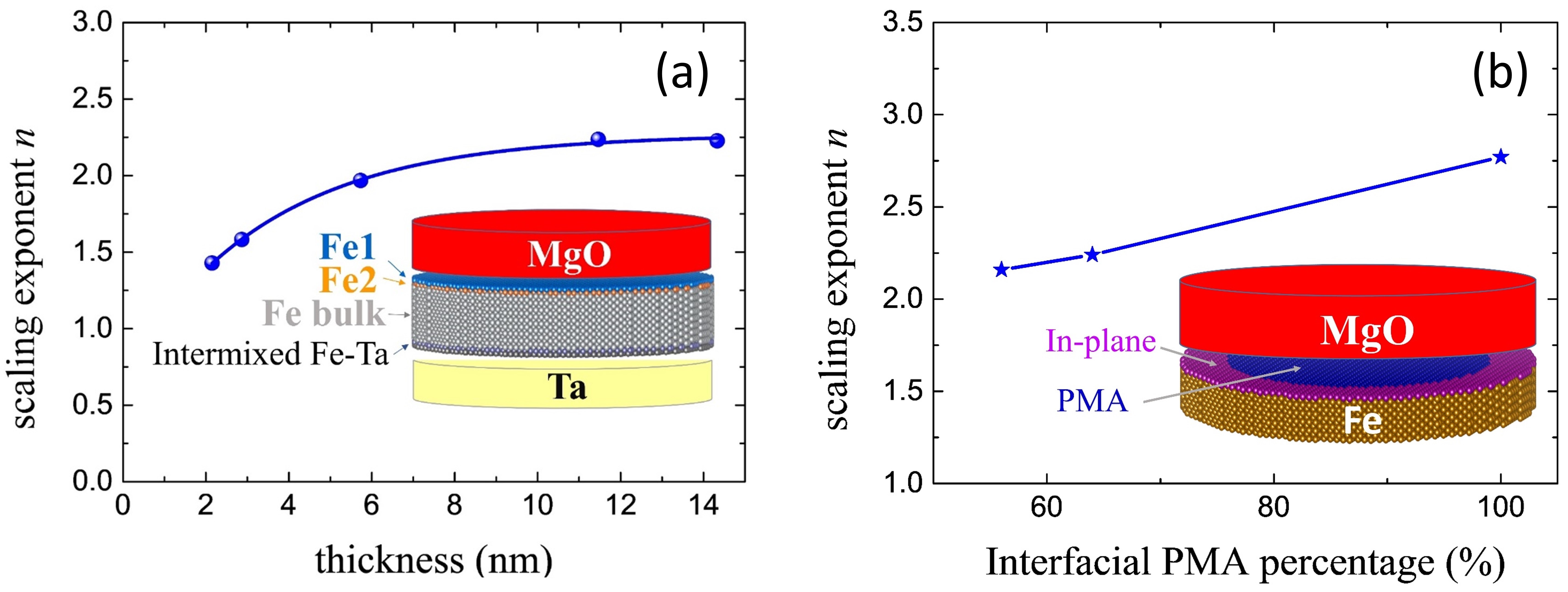A recent breakthrough in understanding the thermal effects on the magnetic properties of perpendicularly magnetized Fe/MgO interfaces is reported. It turns out that the macroscopic mechanisms play a decisive role in determining the thermal stability of magnetization in such structures.
The perpendicular magnetic anisotropy (PMA) at magnetic transition metal/oxide interfaces(TM/Ox) is a key element in building out-of-plane magnetized magnetic tunnel junctions for spin-transfer-torque magnetic random access memory (STT-MRAM). The PMA at those interfaces originates from strong hybridizations between the interfacial (Co)Fe-3d and the O-2p orbitals combined with spin-orbit coupling. Interestingly, TM/Ox interfaces provide both low switching currents, owing to the relatively weak Gilbert damping, and high thermal stability thanks to their large PMA values. Since thermal effects become more critical with downscaling, understanding the temperature dependence of the magnetic properties, in particular the magnetization (M) and anisotropy energy (K), becomes crucial. The correlation between the temperature-dependent first order K and M, as described by Callen and Callen, follows a power scaling law: K(T)/K(T=0)=[M(T)/M(T=0)]3. However, deviations from this law and in particular n < 3 scaling exponents have been reported experimentally.

The correlation between the temperature-dependent magnetic anisotropy and magnetization, described by the scaling exponent ‘n’, is revealed for (a) dead-layer including, and (b) inhomogeneous Fe/MgO samples.
Using a multi-scale approach, reserachers at SPINTEC in collaboration with Western Digital elucidated the correlation mechanisms between temperature dependence of magnetic anisotropy and magnetization in Fe/MgO structures. In an ideal interface, first-principles calculations of the layer-resolved magnetic anisotropy, magnetic moments, and exchange constants, show an enhancement of the values at the interface compared to bulk. Those intrinsic parameters provide a more accurate description of the temperature dependence of the magnetic properties in the atomistic model. The temperature-dependence of the total and layer-resolved anisotropy were shown to follow the Callen and Callen scaling power law and thus intrinsic properties cannot explain deviations from this law. By modelling realistic samples, the authors attribute the deviations observed experimentally to two macroscopic mechanisms: the presence of a magnetic dead layer or the spatial fluctuations of the interfacial PMA.
Those results are anticipated to help in understanding the thermal stability of the storage layer magnetization which is a key parameter for the memory retention in STT-MRAM applications.
Teams: Theory and Simulation, MRAM
Collaboration: Western Digital Technologies (USA)
Funding: Advanced Storage Research Consortium (ASRC), European Research Council (ERC) Advanced Grant Project MAGICAL No. 669204
Further reading: Unveiling temperature dependence mechanisms of perpendicular magnetic anisotropy at Fe/MgO interfaces, F. Ibrahim, A. Hallal, A. Kalitsov, D. Stewart, B. Dieny, M. Chshiev, Phys. Rev. Applied 17, 054041 (2022).
Contacts: Fatima IBRAHIM, Mairbek CHSHIEV




